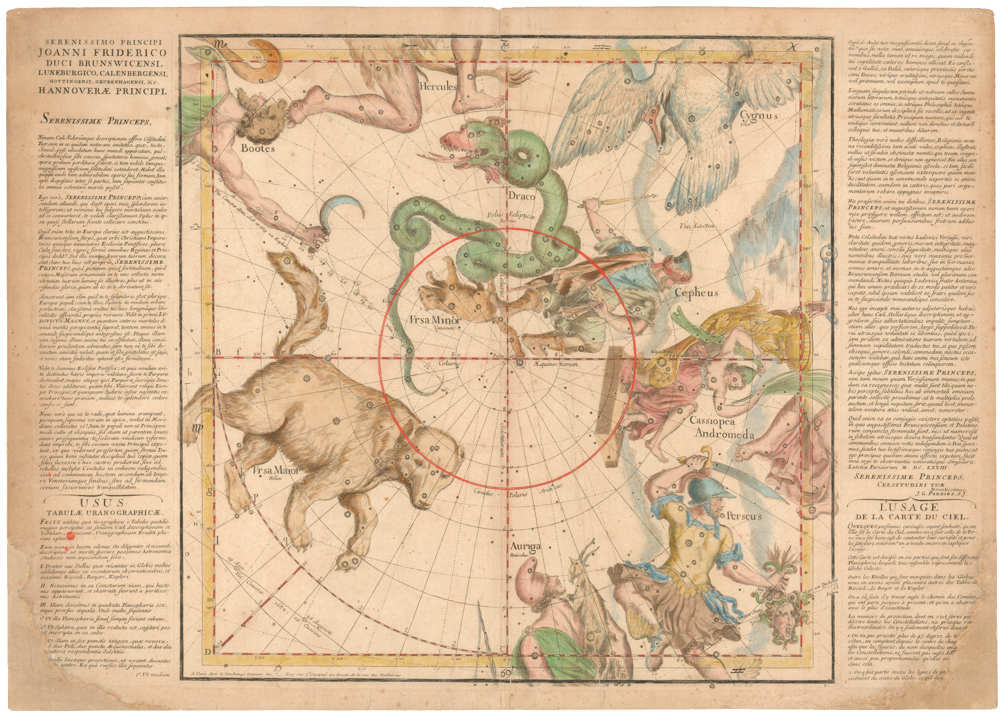Ignace-Gaston Pardies (1636-1673) was born in Pau, Southern France, as the son of a French assemblyman. He joined the society of Jesus in 1652, at age 16, and soon began his studies in classical literature, philosophy, and mathematics; subjects which he soon also taught at the prestigious secondary school Lycée Louis-le-Grand in Paris.
A true polymath, Pardies published treatises of a range of subjects including the construction of sundials, formal critiques of Galileo and Isaac Newton, and studies on optics and the theory of light. The Dutch physicist Christiaan Huygens — a father of the scientific revolution and one of the greatest scholars of his time — accredited Pardies with the theoretical observation that the speed of light had to be finite.
The work that above all caused Pardies to be remembered as a great thinker and scholar was his celestial atlas Globi coelestis in tabulas planas redacti descriptio, which was first published in 1674, and had been reissued twice by 1700. The atlas set new standards for depicting and describing astronomic observations and was the key work for generations of stargazers. Almost 200 years after its publication, in 1844, the English astronomer William Rutter Dawes drew very directly on Pardies’ atlas in compiling his own set of star charts, which themselves set new standards for the mapping of the heavens.
Pardies never lived to see his labor come to fruition, as he died two years before its publication. The final expression of the folio volume was consequently influenced by both the typesetter Sebastien Mabre-Cramoisy and the Parisian engraver Guillaume Vallet, who helped materialize Pardies’ rendition of the heavens to the highest aesthetic standards. And finally, there was, of course, the hand of Jean de Fontenay (1643-1710), a fellow Jesuit astronomer and the posthumous editor of Pardies groundbreaking work.
-
-
Add to cartQuick View
- Curiosities - Miscellanea, Featured Maps & Views
Globi coelestis in tabulas planas redacti descriptio, auctore R. P. Ignatio Gastone Pardies Societatis Jesu mathematico. Opus postumum
- $15,500
- One of the rarest sets from the Golden Age of celestial cartography.
-
Add to cart

